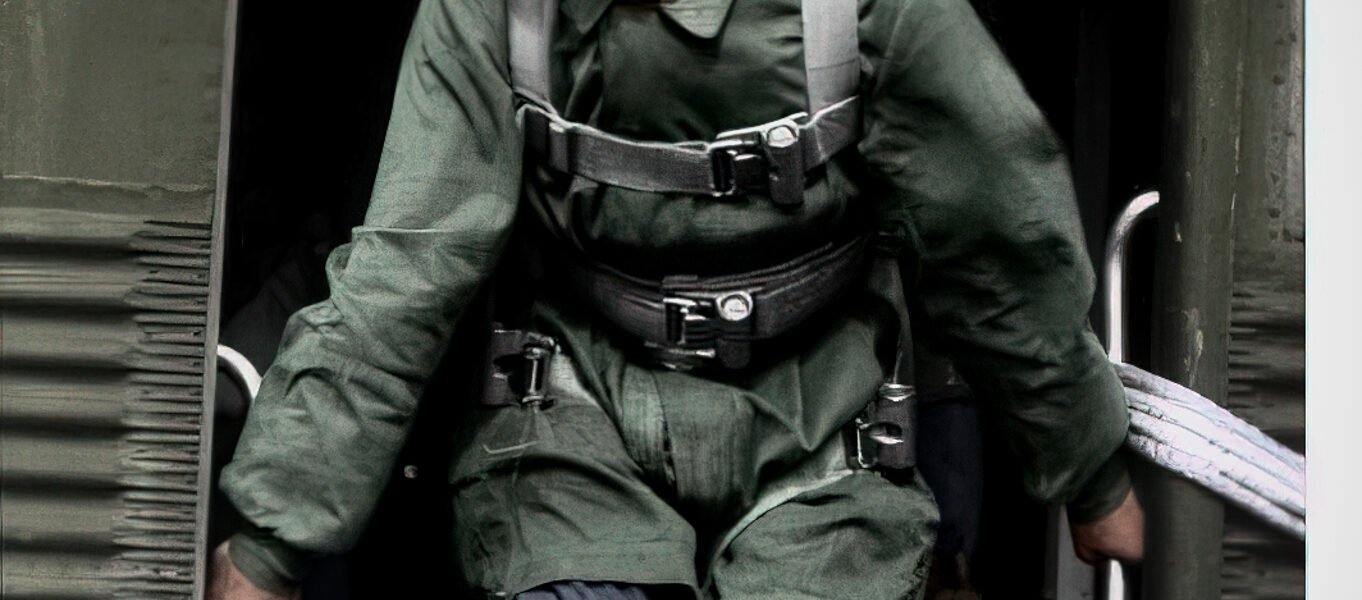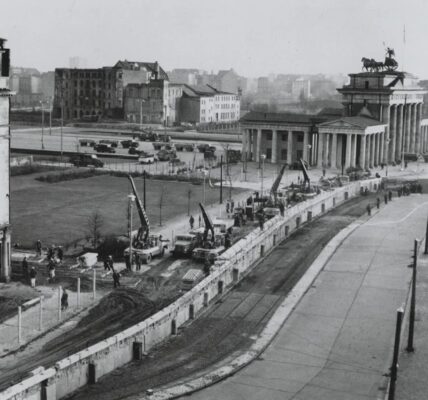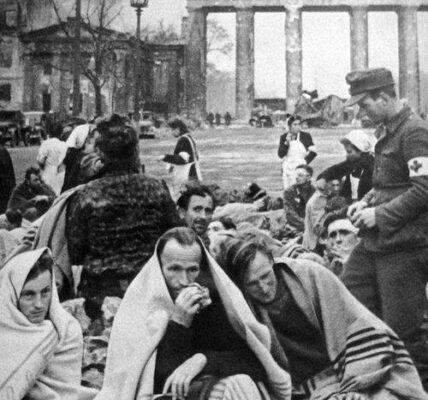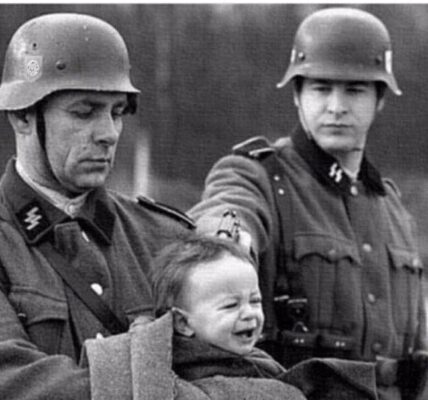The Wehrmacht’s paratroopers were considered an elite unit, known for their discipline, physical fitness, and strategic importance. In June 1944, during the Allied invasion of Normandy, they were a crucial part of the German defense. A striking image shows a paratrooper preparing for his jump, equipped with his iconic jump gear and a determined look on his face.
The paratroopers relied not only on their physical strength but also on innovative tactics. Their primary task was to secure strategically important points behind enemy lines, often under difficult conditions and at high risk. In the case of France in 1944, this meant protecting bridges, lines of communication, and key defense points.
In addition to their jump gear, a typical paratrooper often carried the FG 42, an advanced rifle developed specifically for that unit. They also carried hand grenades, a lightweight helmet, and a standardized jump harness. Many paratroopers also carried additional ammunition and emergency supplies to ensure survival in isolated situations.
The parachutes themselves were carefully packed and tested to ensure maximum reliability. Since most of the missions took place at night, it was essential that the equipment was robust and functional.
The jump into Normandy presented the paratroopers with considerable challenges. The region’s dense network of hedges and fields made landing difficult. Added to this was the massive pressure from Allied air and ground attacks, which had already weakened many German positions beforehand.
Despite the adversity, the paratroopers remained a serious threat to the Allies. Their tactical positioning and determined fighting spirit ensured their use as a “fire brigade” on many fronts, filling critical gaps in the defenses.
 The paratroopers remain a fascinating part of World War II military history. Their courage and skill were respected by both friends and foes. But the reality of their service—marked by loss and the horrors of war—should remind us how complex and tragic the history of this era was.
The paratroopers remain a fascinating part of World War II military history. Their courage and skill were respected by both friends and foes. But the reality of their service—marked by loss and the horrors of war—should remind us how complex and tragic the history of this era was.







